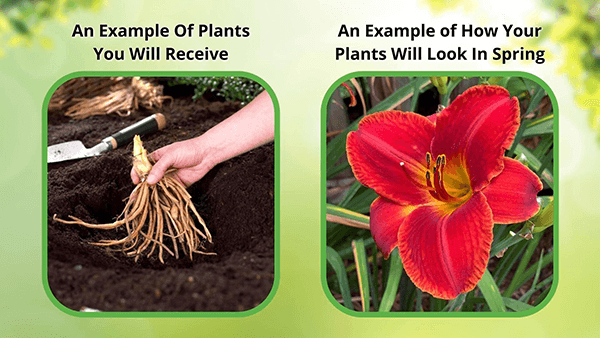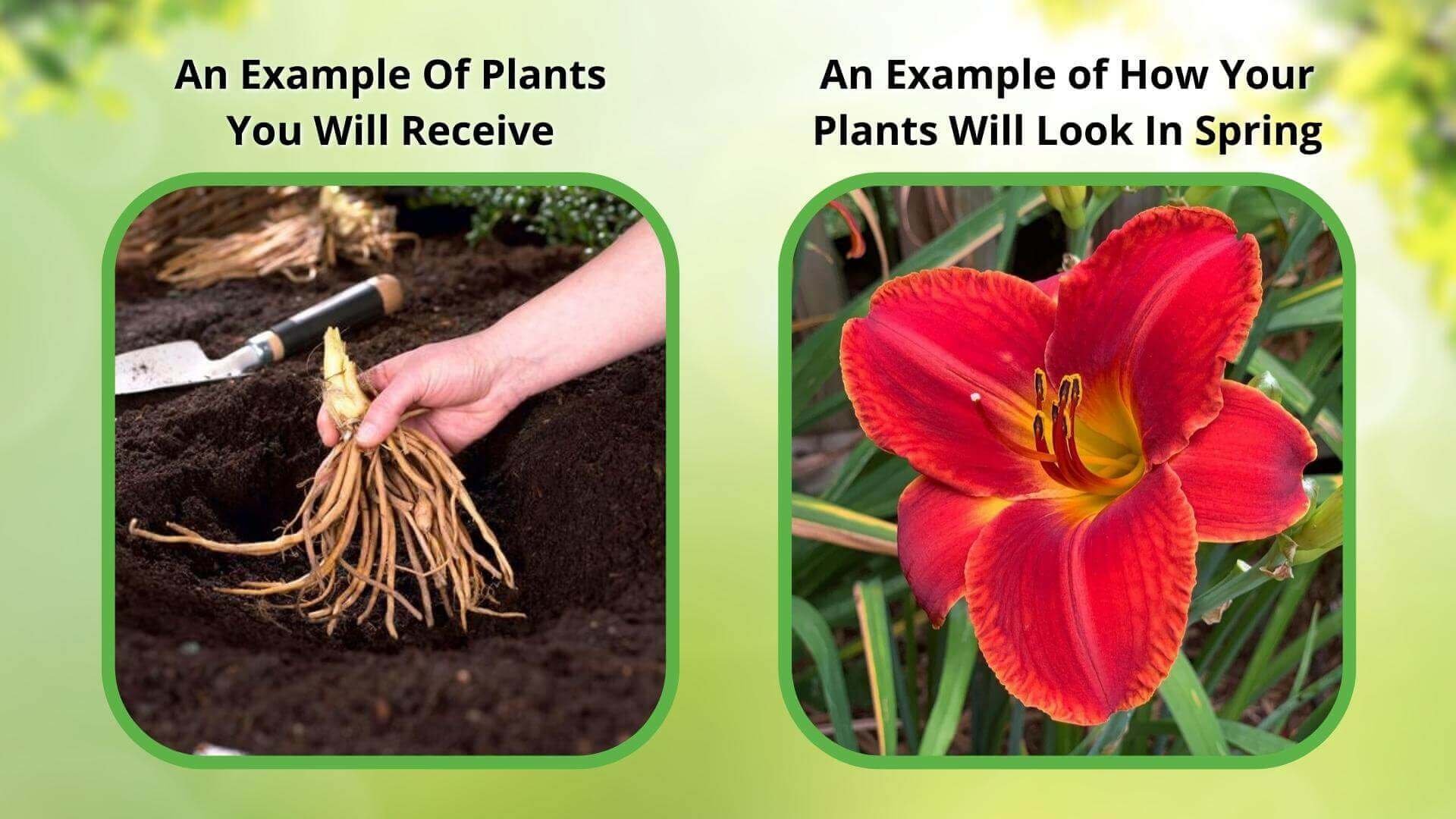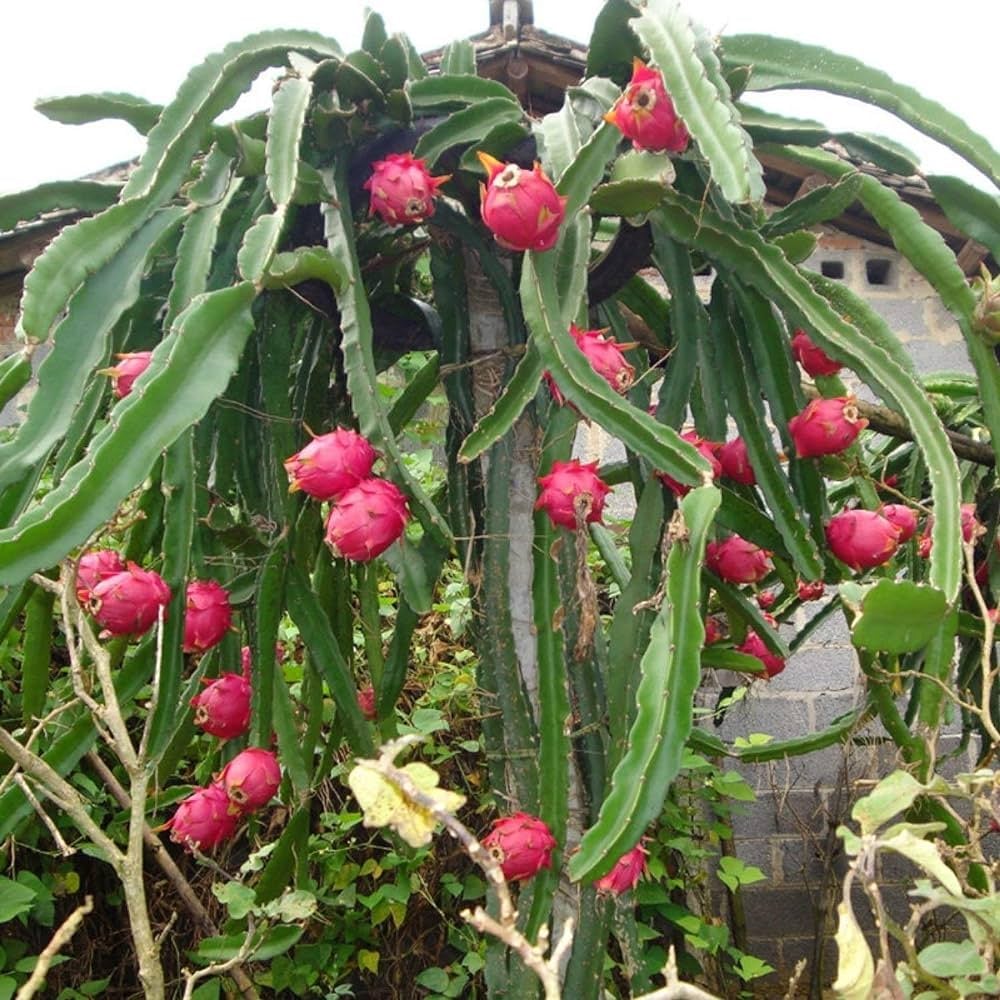



Anemone Plant
Stunning spring and fall blooms
Versatile in various garden settings
Low maintenance and hardy
Thrives in
ZONE 4ZONE 5ZONE 6ZONE 7ZONE 8ZONE 9ZONE 10This plant ships:
Ships Week of May 5thAnemone Plant: Anemone Quinquefolia
When it comes to transforming your garden into a vibrant oasis, few flowers can rival the charm of anemones. These colorful flowers, often called windflowers, come in various shapes and hues, making them perfect for adding visual interest to any landscape. Whether you're looking to attract pollinators or simply enjoy their beauty throughout the seasons, they have something special to offer. Having spent quite some time researching and caring for these delightful blooms myself, I'm eager to share wisdom that will help you understand how to select, plant, and care for them effectively in your garden. Let's dive into the enchanting world of them and explore the different types that can breathe life into your outdoor space!
The flowers, commonly known as windflowers, are diverse flowering plants valued for their vibrant blooms and seasonal beauty. They thrive in moist, well-drained ground with full to partial sun exposure and need proper care, including regular watering and protection during harsh winters to flourish in your garden.
Planting Guidelines For Anemone Plant
Proper planting techniques set the stage for healthy growth and vibrant blooms, making each step crucial to creating an inviting garden filled with colorful ones. It all begins with soil preparation, which is vital because they thrive in moist, well-drained dirt that is full of organic matter. To achieve this, consider mixing compost into your garden soil-it enhances nutrient content and improves drainage. Think of it as giving your flowers a nutrient-rich bed to lie down and rest in; a comfortable home encourages strong root development.
Step-by-Step Planting Process For Anemone Plant
Moving on to proper placement, choosing the right location for yours can significantly influence their growth and bloom potential. Look for spots that receive full sun to partial shade, ideally ensuring they bask in at least four hours of sunlight per day. Sunlight helps them build the energy needed for those lovely flowers we all adore.
Now that you've selected a sunny spot, it's time to think about the planting depth and spacing. The corms or tubers should be planted about 3'' deep, with the pointed end facing upwards-this way, they'll know which direction to reach out towards the light. Just as importantly, space them roughly 12 inches apart. This spacing provides adequate air circulation and room for growth, helping prevent diseases that could arise from overcrowding.
Once you've put yours in the ground, don't forget about the initial watering! It's crucial to water thoroughly after planting; this step helps settle the soil around the roots and kickstarts their establishment process. Aim for keeping the soil lightly moist afterward-not soggy-because while these flowers appreciate moisture, too much water can lead to rotting.
Following these careful planting guidelines will set yours up for success. After planting, it's essential to turn our attention toward ensuring they receive optimal care and nurturing for continued healthy growth.
Essential Care Tips
Keeping them thriving relies heavily on a well-structured care routine. It's important to ensure they get just the right amount of everything.
To start, let's discuss the watering schedule. They thrive in a consistent moisture environment; they require regular watering, especially during weeks when rainfall doesn't exceed one inch. A deep watering once a week is usually sufficient. This approach prevents root rot while helping to establish strong, resilient flowers. Remember, it's crucial not to let them dry out completely, as this can stress the flowers and diminish blooming potential.
Temperature and Humidity
Now let's shift gears and talk about temperature. They are happiest in ideal daytime temperatures of 58-65°F and cooler nighttime temps of 42-50°F. They don't have extensive humidity needs but flourish best in cooler conditions. If you're gardening in particularly hot climates, providing some afternoon shade can keep these delicate flowers happy and prevent wilting.
As someone who loves to garden year-round, I soaked in the beauty of these flowers every season by paying close attention to their environment. Over time, I've learned how much they thrive with just the right care!
Fertilization and Soil Quality
Another vital component of maintaining healthy ones is ensuring they have access to nutrients through proper fertilization. Applying a balanced fertilizer like a 10-10-10 blend every four to six weeks during the growing season will promote robust growth and more prolific blooms.
Also, ensuring that they are planted in well-drained dirt rich in organic matter. This type of soil helps retain moisture without becoming too compacted or wet.
Finding that perfect balance of moisture and nutrients is key to unlocking your flowers full blooming potential.
Seasonal Care Considerations
Let's not forget about the seasonal changes which also require thoughtful care strategies. During transitioning months-like early spring or late fall-adjusting your approach can make a world of difference.
For example, if winters are particularly harsh where you live (think zones 6b or colder), protecting your outdoor potted ones from extreme weather might be necessary. Bringing pots indoors during cold snaps or wrapping them in burlap can shield them from frost damage.
Understanding the care involves making small adjustments based on environmental changes, watering regimes, and nutrient access. By observing their growth patterns and adapting your practices accordingly, you can create a thriving garden filled with stunning blooms!
With this careful attention to their specific needs, we can now explore ways to nurture these flowers for maximum flowering success.
Encouraging Healthy Blooms
To promote vibrant and continual blooms, understanding the specific needs of them is crucial. Fertilization plays a significant role in this process. Using a balanced liquid fertilizer bi-monthly during the growing season enables these lovely flowers to access necessary nutrients effectively. This feeding strategy supports lush growth and boosts blooming substantially. When they receive the right balance of nutrients, they can produce abundant flowers, turning your garden into a riot of color.
Fertilization
Not all fertilizers are created equal; a decent rule of thumb is to choose one that has equal parts nitrogen, phosphorus, and potassium-often listed as 10-10-10. This balanced formula nurtures soil health and helps flowers develop strong roots, which is essential for sturdier stems supporting larger blooms. Applying this fertilizer directly after yours start to emerge in spring sets the stage for healthy growth throughout the blooming season.
As you consider fertilization, think about deadheading as another crucial practice to encourage blooming. After yours have flowered, remove spent flowers promptly. This signals to the flowers that it should continue producing blooms rather than diverting energy towards seed formation. By regularly clearing away those faded blossoms, you're inviting more vibrant flowers to take their place.
Deadheading and Pruning
Pruning is another essential step in maintaining flowers health. Regularly check yours for any dead or unhealthy growth. Removing these parts tidies up the look of your flowers and enables them to focus their energy on producing new flowers instead of repairing damage or supporting dying sections. It's like giving them a fresh start-a little encouragement goes a long way!
Lastly, keeping a watchful eye on environmental conditions will further bolster your efforts in promoting healthy blooms. They prefer full sun to partial shade, so ensuring they get enough sunlight can make a significant difference. These needs vary slightly between species but generally range from six to eight hours of direct sunlight daily for the best blooming results.
It's important to stay attentive; even with careful tending, challenges may arise. Understanding how to address these hurdles will help keep the vitality of your garden.
Advantages of Them in Gardens
One cannot overlook the stunning visual contribution that they provide. From striking poppy-like blooms to delicate, whimsical snowdrop windflowers, their vibrant colors and diverse forms can transform a mundane garden into a spectacular showcase of nature's artistry.
Imagine stepping into your yard and being greeted by a dance of colors, as the reds, blues, and whites of various species catch your eye. These flowers bloom at different times, ensuring that there's always something blossoming throughout the growing season. This continuous flow of color not only enhances visual interest but also creates a serene atmosphere, making it an ideal retreat.
Low Maintenance
They effortlessly meld beauty with simplicity. As one gardener shared, "They are a joy to have-they require minimal care but offer maximum beauty with their stunning blooms."
This sentiment resonates with many who appreciate the opportunity to enjoy beautiful flowers without extensive upkeep. Once established, they grow robustly in various conditions and generally withstand periods of dry weather. With a little initial investment in soil preparation and watering until they settle in, these hardy flowers hardly ask for more than a few waterings during dry spells.
The ease of maintenance makes them especially appealing for both novice gardeners and busy individuals looking to beautify their landscapes without dedicating countless hours to upkeep.
Ecological Benefits
Beyond their aesthetic charm and uncomplicated nature lies another significant advantage: the ecological benefits they bring. They attract pollinators.
In fact, studies reveal that gardens flourishing with a variety of flowering plants-anemones included-have seen a 30% increase in pollinator presence compared to those with fewer flowers. By planting them, you're not just enhancing your garden's beauty; you're actively contributing to the local environment and acting as a steward for wildlife.
Incorporating anemones into your garden not only adds stunning beauty but also supports local ecosystems. They represent a perfect blend of elegance and functionality for any gardening enthusiast.
This Is How Your Plants Will Look upon Delivery

Bloom Season
Spring
Bloom/Foliage Color
White
Height at Maturity
Under 12"
Care
Water Anemone plants regularly, keeping the soil evenly moist but not waterlogged. Ensure well-drained soil is enriched with organic matter—mulch in winter to protect roots from freezing. Split the roots every few years to maintain vigor. Deadhead spent blooms to encourage more flowering.
Plant Reproduction
Anemone Plant spreads by underground rhizomes or by spreading roots.
Shipping date depends on the date displayed and chosen when you order from the product's page.
We only accept returns on plants verified dead. If you think your plants have died, we offer a 1 year warranty, please use this File a Claim Link to verify dead plants and start with return warranty process.





.png?v=1721986946683&em-origin=cdn.accentuate.io&em-format=auto)
Nighttime Blooms:
Known for their nyctinastic behavior, Anemone flowers open and close in response to light, creating a dynamic and interactive display in your garden.
Cut Flower Longevity:
They keep growing even after they’re cut. Anemones make excellent cut flowers that retain their beauty in arrangements for a longer time, adding elegance and charm to indoor displays as well.
Delicate Yet Bold Appearance:
Despite their striking, bold look, Anemone flowers are actually quite delicate and sensitive to ethylene, which adds a unique charm to their presence in any garden or floral arrangement.
Cultural Significance:
In some cultures, Anemone plants are believed to keep away evil spirits. They can also symbolize love, happiness, or sincerity.
Caring Tips
How do I care for my Anemone Plant?
Each box contains detailed care instructions and information about your product. But here's the basics.
Care Tips
Water Anemone plants regularly, keeping the soil evenly moist but not waterlogged. Ensure well-drained soil is enriched with organic matter—mulch in winter to protect roots from freezing. Split the roots every few years to maintain vigor. Deadhead spent blooms to encourage more flowering.
Light Requirements
Anemone plants thrive in partial shade to full sun. Ideally, they prefer dappled sunlight or morning sun with afternoon shade, especially in hotter climates, to avoid scorching the delicate flowers and foliage.
Hardy Planting Zones
4 • 5 • 6 • 7 • 8 • 9 • 10
Header
Use this content to share information about your store and products.
Frequently Asked Questions
How often should I water my plants?
How do I know if my plant is getting too much or too little sunlight?
What should I do to prepare my plants for winter?
What are the signs that my plant needs fertilizing?
How can I prevent pests from damaging my plants?
How do I choose the right plant for my climate zone?






